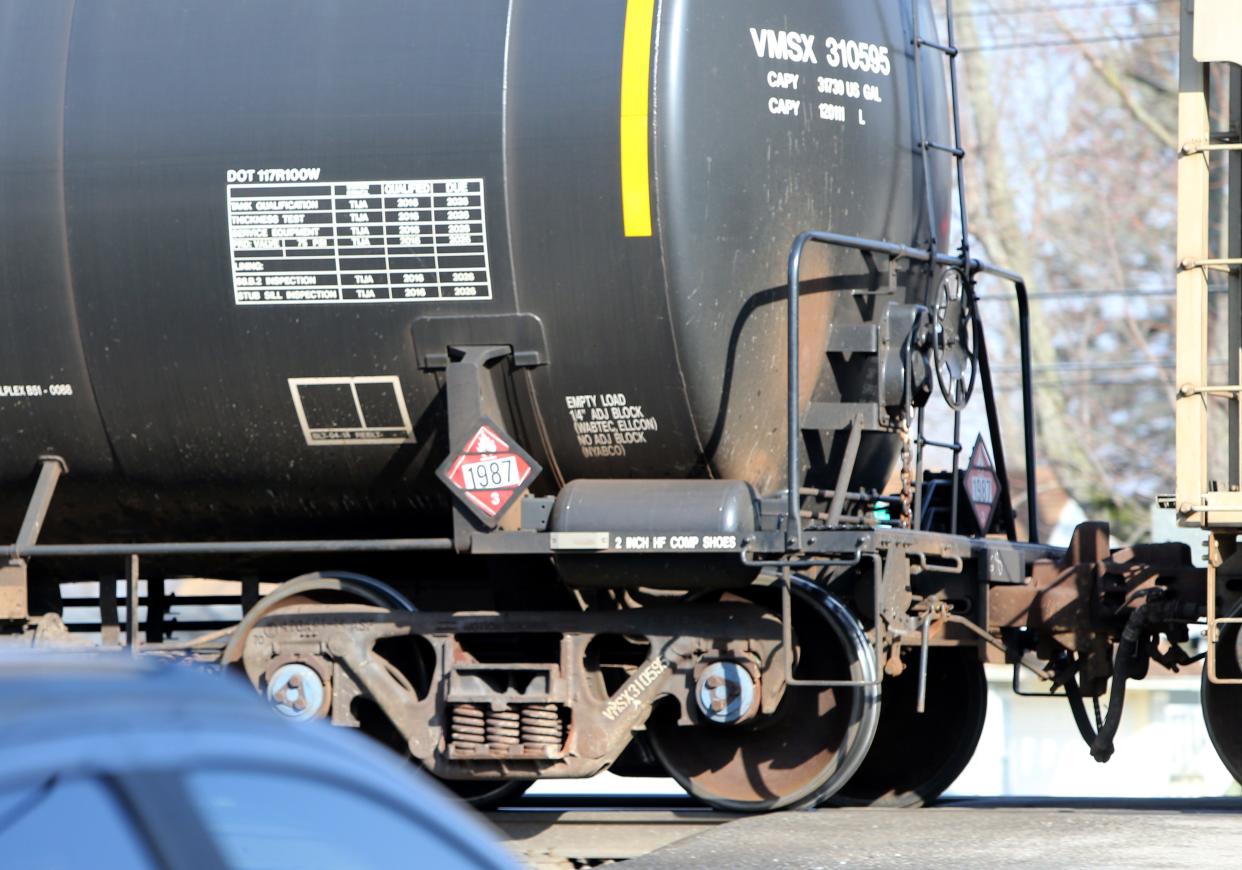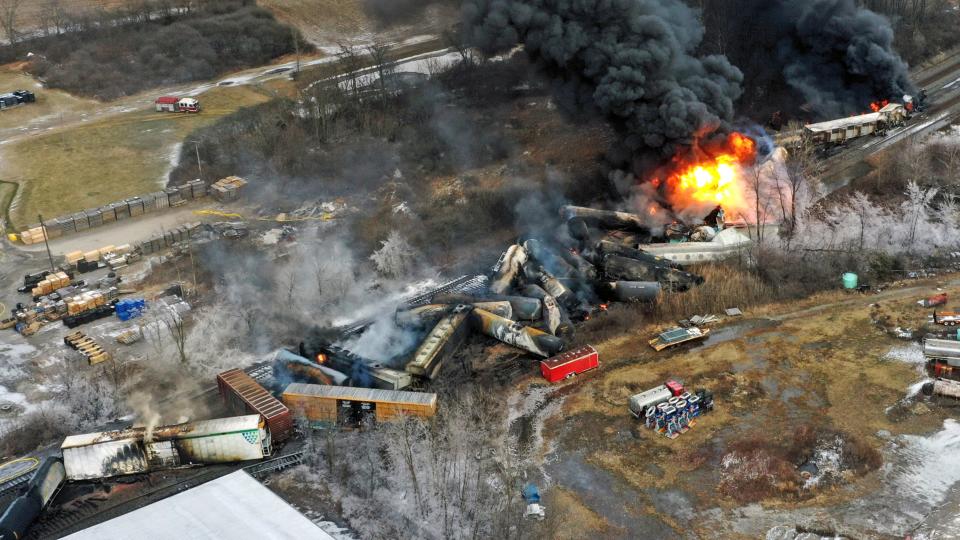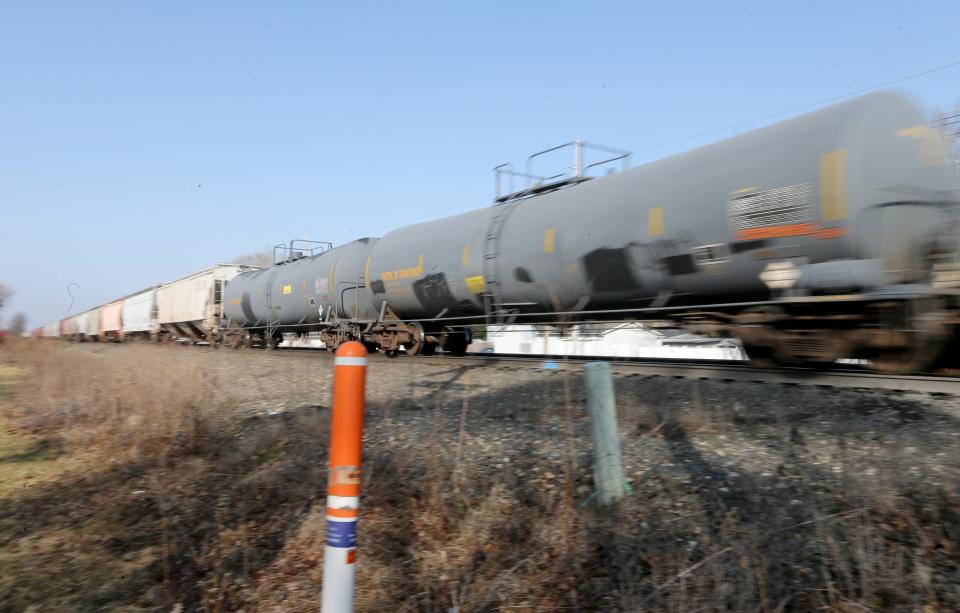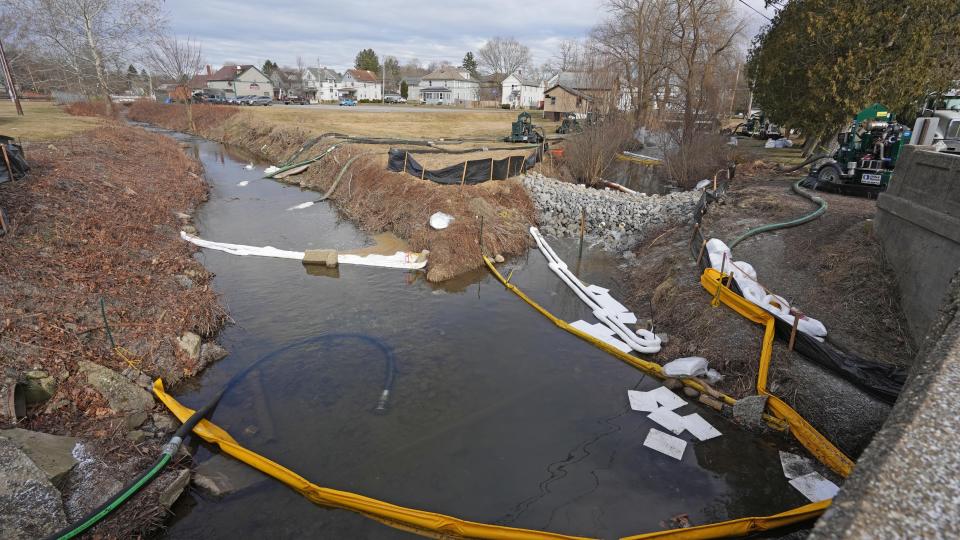After Ohio train derailment, Michiana emergency responders prepare for disaster here

As residents of East Palestine, Ohio continue to deal with the fallout from a freight train crash that expelled harmful chemicals into the air and water, questions continue to swirl.
How did the crash happen? Are the air and water safe? What can be done to prevent future derailments?
In Michiana, officials are also asking questions, starting with a big one: What if that happened to us?
Local derailment:Michigan trooper who died in 1981 after exposure to chemical fumes honored in Bridgman
Like East Palestine, South Bend — and other large cities in Indiana — sees major railroads shipping freight through city limits. In fact, the train at the center of the recent disaster passed through Lafayette and Fort Wayne before crashing in eastern Ohio.
Though increased safety measures for railcars are being debated at the federal level, the prevalence of trains and trucks transporting toxic chemicals through Michiana gives local officials real concerns about the possibility of a disaster involving hazardous waste.
“It’s not if; it’s when. And when it does happen, we’ll be ready,” said Jennifer Tobey, executive director of Elkhart County’s Emergency Management Agency. “Safety is the number one priority in our eyes.”

Officials in St. Joseph County share Tobey’s apprehension and feel they are reasonably well-prepared for crashes involving hazardous materials given the strength of local hazmat teams and prior research into where dangerous chemicals are stored and transported.
“We’ve been very concerned reading about it, watching it, monitoring it. We hope that won’t happen here," echoed Al Kirsits who heads the Emergency Management agency in St. Joseph County.
Michiana response
According to data from the Environmental Protection Agency, there have been close to 10,000 railroad incidents across the country involving hazardous waste in the past decade. Roughly 500 of those incidents happened in Indiana, where there are about 5,000 miles of rail lines that crisscross the state.
Locally both Norfolk Southern, whose train crashed in East Palestine, and Canadian National have routes through South Bend and Elkhart.
Kirsits, a longtime South Bend firefighter, said one of the biggest tools local officials have in combatting dangerous situations is information.
Both Kirsits and Tobey said their agencies know the locations and quantities of hazardous materials stored in their respective counties. The companies storing said materials are required to report them to the state and provide funding to local emergency agencies. That funding usually goes to training and equipment for fire departments, Kirsits said.
Stopped traffic. Dangerous crossings:Osceola's train traffic woes could be solved. Here's how
For chemicals coming through the region via train, however, emergency responders don't have as much information. In comments provided to the IndyStar, a representative for the Association of American Railroads estimated there are 2.4 million hazmat shipments in the country each year. The spokesperson said it would be dangerous if people knew in advance where and when harmful chemicals were moving.
While a lack of knowledge makes it harder to pinpoint where risks of chemical spills are highest, Kirsits and Tobey said, they have a good working relationship with railroad representatives and have a good general knowledge of what passes through their counties.
Tobey isn’t asking what trains come through Elkhart on a day-to-day basis, but she has Norfolk Southern’s hazardous materials coordinator “on speed dial” should she need information.
Jim Lopez, a deputy director of St. Joseph County’s EMA, concurred, saying the railroads have even paid for South Bend fire crews to get extra training with hazardous materials.
“In my career, which has spanned 40 years, we have never had a problem with them not wanting to help or support our community responders,” Lopez said.
Both local agencies also commission commodity flow studies every five years to get an idea of what and how many products and materials move through their jurisdictions. St. Joseph County’s most recent study in 2017 showed Norfolk Southern runs an average of 38.5 trains through the county each week, while Canadian National runs three.
Elkhart’s most recent survey was completed last year and is not yet publicly available, but Tobey said the data shows a 13% increase in products moving through Elkhart. That increase in goods also includes waste products, which she said makes a truck or train crashing and spilling harmful chemicals inevitable at some point.

“We have more product going through our county than expected,” Tobey said. “Those are the things that keep me up at night and cause us to take a look at the 'what ifs.' Not if it’s going to happen, but when it happens.”
Both Tobey and Kirsits said there have been a few derailments locally in the past 20 years and there likely will be more in the future; neither said their agencies have changed anything about their preparations in light of the East Palestine situation.
Transparency about what materials move throughout the state came up this week after Gov. Eric Holcomb raised concerns about the EPA moving hazardous waste products from East Palestine to Roachdale, a small town 40 miles west of Indianapolis.
Tankers that crashed in East Palestine carried vinyl chloride, an explosive and carcinogenic chemical, and other potentially toxic contaminants that were either released into the air by the fire or spilled into waterways.
Cleaning up chemicals
If a similar derailment took place in Michiana, any response would start with hazmat crews embedded in area fire departments.
Jeff Yoder, the hazmat coordinator for the South Bend Fire Department, oversees about 36 firefighters certified for hazmat duty, and many of them have gone to specialty training exercises as far afield as Colorado.
Once they get on the scene of an oil or chemical spill, the unit first identifies what chemicals are in play and sets up a perimeter to protect the public. From there, firefighters work to contain the harmful substances through a number of techniques, like digging ditches or controlling the flow to one area. Often, the quickest — and safest — way to clear the chemicals from the area is to start a controlled burn, as fire personnel in Ohio did.

Yoder said he's confident his team is up to the task should the need arise in South Bend, though he acknowledged it's often impossible to know whether or not you're prepared until you're faced with a real-life situation.
"I knock on wood because we've never had a major incident like that in South Bend," Yoder said. "So I can say we're prepared to deal with it, but until we're actually put in those circumstances, it's really hard to tell how things are going to unfold."
In Elkhart, Tobey didn’t say how many hazmat personnel were available but mentioned the number is growing with more units from Warsaw and Goshen getting trained.
In a situation like the one that played out in East Palestine, local environmentalists say the biggest concern would be if toxins get into the groundwater. If that happened, it’s possible chemicals could get into the water supply for local municipalities. So far in East Palestine, EPA testing shows the town’s drinking water does not show signs of contamination.
Even if the water supply is unaffected, explained Matthew Meersman, who serves as the river basin program director with the Michiana Area Council of Governments, a crash involving hazardous waste would likely get into the St. Joseph River since the waterway draws more on groundwater than other rivers in the state.
“We are vulnerable to groundwater contamination becoming a surface water pollution issue,” Meersman said.
If the crash happened in the immediate vicinity of the St. Joseph River, the contamination could spread all the way into Lake Michigan, which would have far-reaching effects on the region’s ecosystem and could prove especially harmful for communities, like Benton Harbor, that draw their drinking water from the lake.
Officials also caution that vinyl chloride isn’t the only compound capable of causing environmental damage. Meersman and Kirsits are more worried about oil and gas, which are shipped through Michiana in much higher volumes than specialty chemicals like vinyl chloride.
Meersman and Yoder also noted that the length of time it takes to clean up major spills often gets lost in the tragedy of the moment. In East Palestine, it will likely take decades of environmental work before the last traces of chemicals are undetectable.
"There is no fast solution to this," said Yoder. "This is a long term process of cleaning this up.
Email Marek Mazurek at mmazurek@sbtinfo.com. Follow him on Twitter: @marek_mazurek.
This article originally appeared on South Bend Tribune: South Bend, Elkhart prepare train crashes with toxic chemicals here

